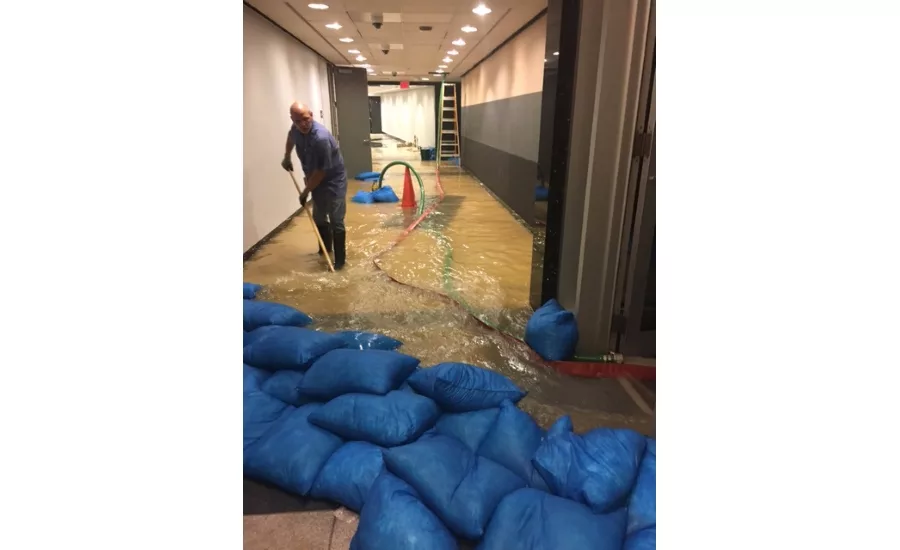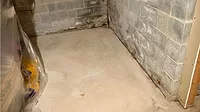Repairing plumbing after a flood
Floods can be devastating, but these tips can help with recovery.

Taking a holistic view of the plumbing situation after a flood is the best plan before getting to work. This will help assess the situation, prioritize the solutions and resolve any issues more effectively. Photo credit: TDIndustries
After being hammered by some of the biggest natural disasters and hurricanes in recorded history over the past few years, folks throughout the U.S. are learning first-hand just how serious flooding can be — especially those in areas where flooding typically isn’t a problem.
And while the initial flood is immediately devastating, homeowners are also discovering that flooding destroys the infrastructure of their homes and their properties. Plumbing systems, in particular, are easy targets for flooding to compromise, and flooding victims may have to spend quite a bit of money and a considerable amount of time restoring their plumbing in the aftermath of a flood.
Doing so strategically is going to help plumbers save their customers time and money while at the same time giving the plumber an opportunity to analyze the plumbing system to make necessary upgrades and put in protection from flooding in the future.
ASSESS THE SITUATION
The plumbing system throughout one’s home is one of the most complex systems on the property, with different components tying into other systems and components with layers of interconnectivity that can be difficult to decipher at first.
This is why plumbers should be sure not to dive right into plumbing fixes after a flood. While one might think unclogging the drains right out of the gate or addressing broken pipes before anything else is the right course of action, it may actually cause other problems somewhere else in the plumbing system.
Taking a holistic view of the plumbing situation after a flood is the best plan before getting to work. This will help assess the situation, prioritize the solutions and resolve any issues more effectively.
UNCLOG DRAINS
After the flood waters have receded, homeowners are likely going to find that their drainage systems — both inside and outside their homes — are filled with all kinds of dirt, debris and silt the floodwaters have deposited in places where they don’t belong.
The plumber’s first course of action should be cleaning out these clogs and obstructions, if only to get the customer’s plumbing system running more efficiently and more effectively. In the overwhelming majority of instances, a plunger or a plumbing snake will suffice in manually breaking down these clogs and flushing the obstructions through the system so that water can run normally again.
REPAIR OR REPLACE DAMAGED FIXTURES
The next step is to address all of the plumbing fixtures and plumbing hardware that has suffered physical damage from the flooding situation.
It’s likely that the floodwaters were carrying all kinds of objects that caused considerable damage through physical contact to the plumbing fixtures, plumbing hardware and infrastructure, in general.
To resolve these issues as soon as possible, repair or replace (and upgrade as necessary) these components so that the plumbing system can return to full operation.
FIX OR REPAIR BROKEN PIPES
Whether through the sheer force of excessive pressure pushed through the plumbing system by floodwaters or because of objects physically destroying or punching holes in the pipes, the odds are very good that the plumbing pipes and infrastructure are no longer safe or no longer effective at doing their jobs.
Check as many of the pipes in your home as you can with a flashlight, specifically looking for any signs of them becoming compromised. Pipes that are obviously broken are going to be easy enough to fix and replace, but it’s the pipes that have signs of damage that might not look “that bad” that are going to be tough to figure out.
It’s always a better idea to err on the side of caution rather than to hope that these pipes that have become compromised will hold up when the plumbing system returns to normal operation.
ASSESS FOUNDATION AND STRUCTURAL DAMAGE
If the flooding was severe, it’s likely the home has suffered foundation and structural damage that needs to be addressed immediately. This is especially true if the plumbing system broke down in the basement or lower levels of the home — the levels closest to the ground where the foundation and footings could have become compromised.
A visual inspection is a start, but when it comes to foundational and structural damage stemming from a flooding situation, it’s always best to call in the professionals and have them look for issues that a plumber may not be aware of or has not been trained to look for in the first place.
The plumbing system is an essential component of any home, but without a rock-solid foundation and a safe structure to depend on, the plumbing system is “small potatoes” in the grand scheme of things. Prioritizing issues and focusing on the biggest and most important projects first ensures any and all plumbing issues stemming from a flooding situation are addressed and appropriately remedied.
Looking for a reprint of this article?
From high-res PDFs to custom plaques, order your copy today!






